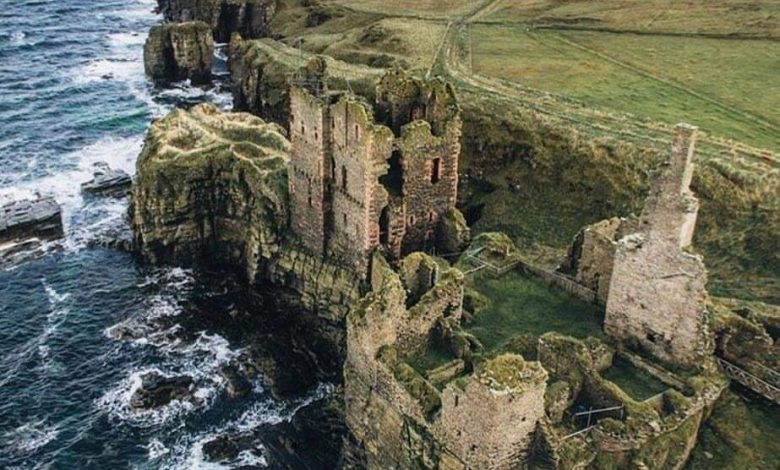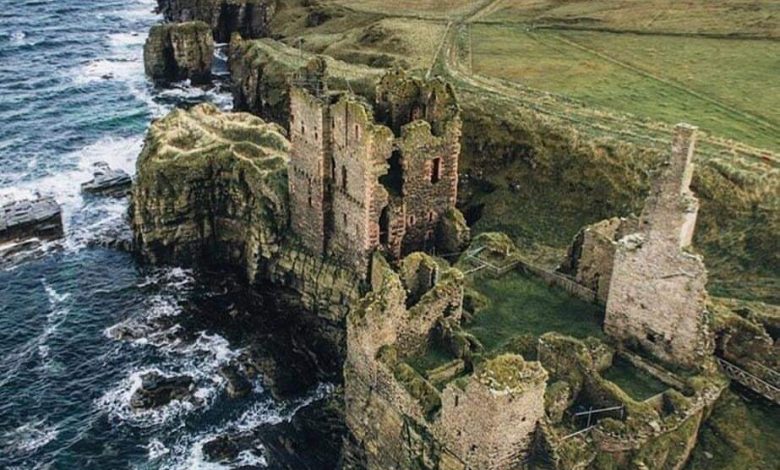
Castle Sinclair Girnigoe is located about 3 miles north of Wick on the east coast of Caithness, Scotland. It is considered to be one of the earliest seats of Clan Sinclair. It comprises the ruins of two castles: the 15th-century Castle Girnigoe; and the early 17th-century Castle Sinclair. They are designated as a scheduled monument
The earlier Castle Girnigoe was built by William Sinclair, the 2nd Earl of Caithness, probably sometime between 1476 and 1496, but certainly before his death at the Battle of Flodden in 1513. There is some evidence to suggest that the castle was built on the foundations of an earlier fortalice.
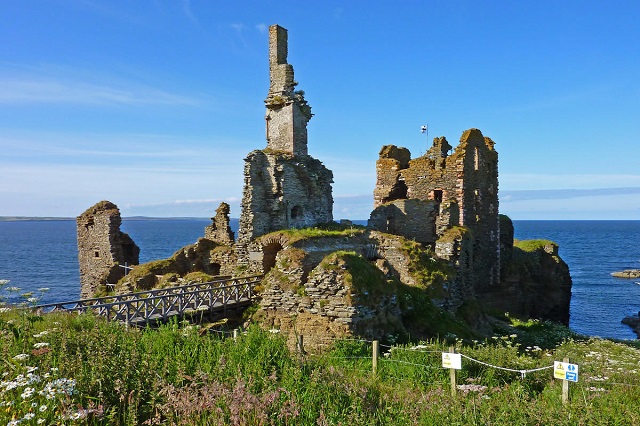
In 1577, George Sinclair, the 4th Earl of Caithness, imprisoned his own son John, Master of Caithness, in Castle Girnigoe, on suspicion of rebelling against his rule. He was held there for seven years, after which his father fed him a diet of salted beef, with nothing to drink, so that he eventually died insane from thirst.
Expansion occurred in 1606 when Castle Sinclair was built, comprising a gatehouse and other buildings, along with a curtain wall. These were connected to the earlier castle by a drawbridge over a ravine.[2] The same year George Sinclair, the 5th Earl of Caithness, requested the Scottish Parliament to change the name to Castle Sinclair, but because the names Castle Sinclair and Castle Girinigoe were both written down in 1700, both names have been in use since.
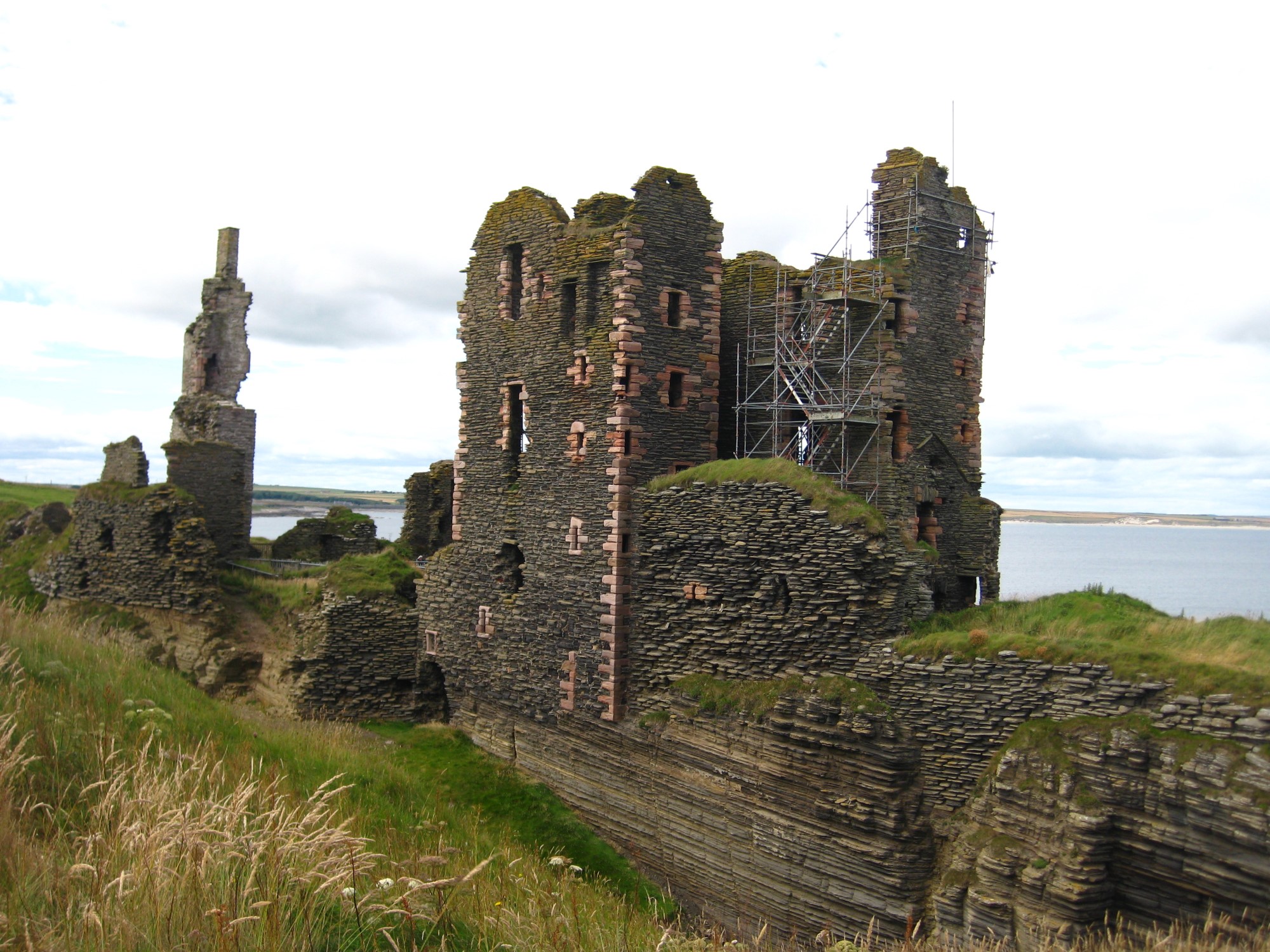
Robert Sinclair describes Girinigoe as “an adapted 5-storey L-plan crow-stepped gabled tower house, which sat upon a rocky promontory jutting out into Sinclair Bay. Of interest is the secret chamber in the vaulted ceiling of the kitchen.”
In 1672, George, the 6th Sinclair Earl of Caithness, was in heavy debt to his fourth cousin, John Campbell of Glenorchy, and transferred the castle to Campbell as payment. When Sinclair died four years later with no heir, Campbell claimed the title Earl of Caithness and married Sinclair’s widow. However, Sinclair’s first cousin, George Sinclair of Keiss, challenged Campbell’s title, and hostilities broke out in January 1680 when Sinclair of Keiss with supporters from Wick made an attack on Girinigoe, destroying the roofs, walls, and floors. In July, Campbell slept on the castle grounds the night before his counter-assault known as the Battle of Altimarlach, in which he prevailed. The dispute was finally settled in 1681 when the Privy Council gave George Sinclair the title of Earl of Caithness but allowed Campbell to remain owner of the land. The castle, so damaged by the siege of 1680, was never inhabited again. The current Baron affiliated to the castle grounds stems to a family in middle England from the early eighteenth century. The current Baron through ancestral lines is Jonathan L H Sinclair.
via The Heart Of Scotland
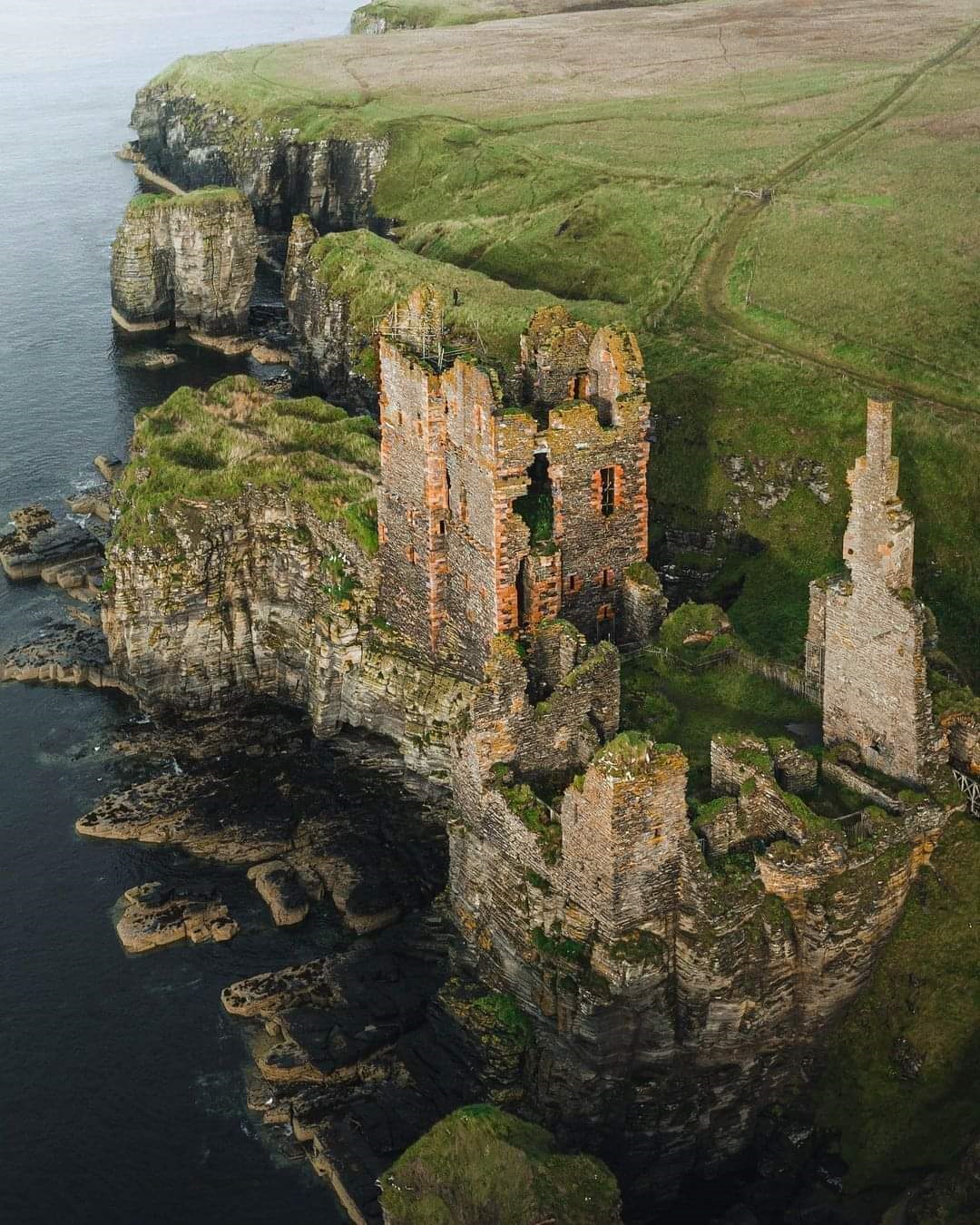
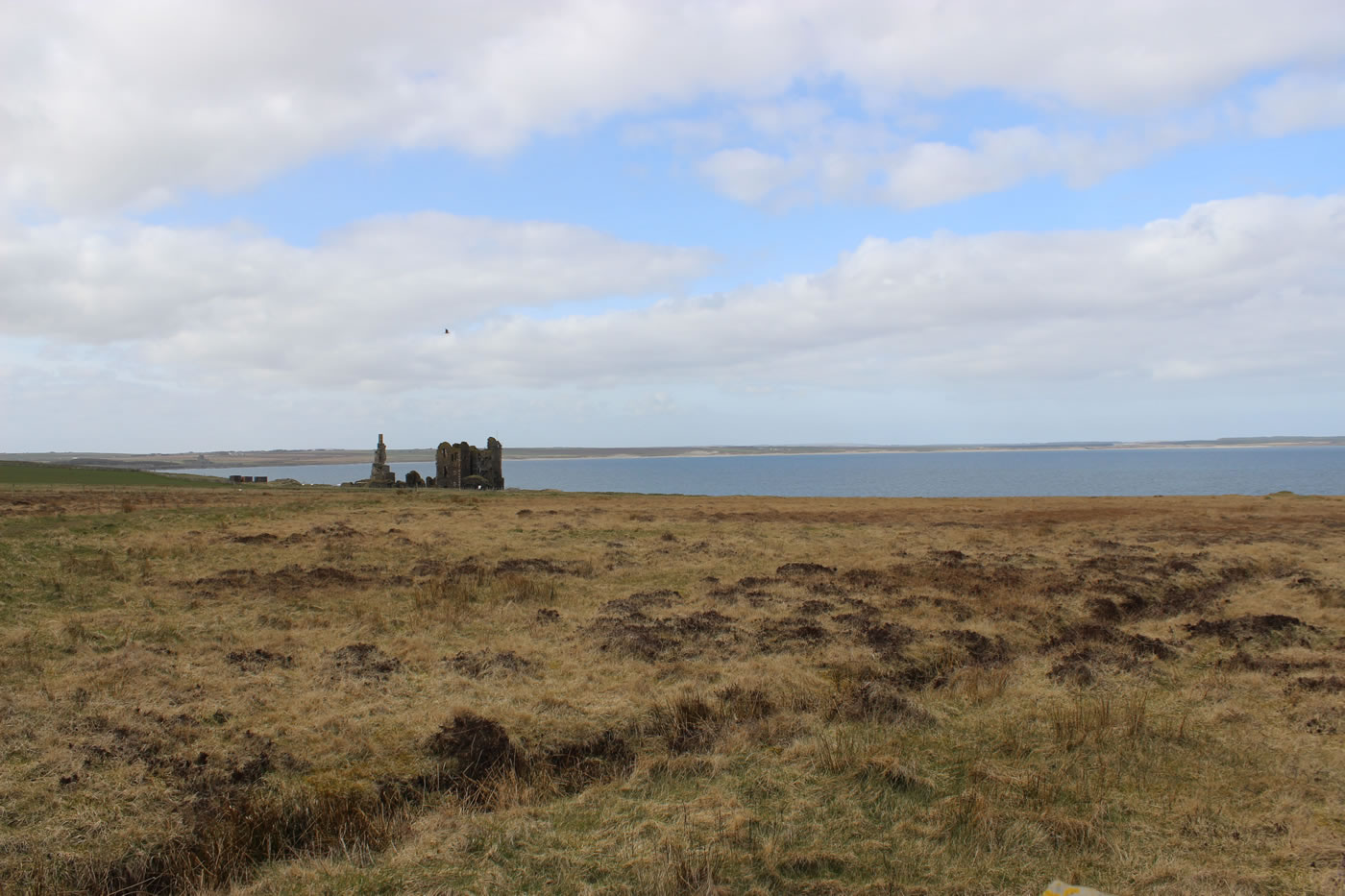
Castle Sinclair Girnigoe, despite its ruined state, is one of the best surviving and unchanged examples of a late medieval/early modern fortified complex to survive in Scotland. Archaeological work undertaken since Watch listing led to an important reinterpretation of the structure, which has assisted historians and archaeologists in better understanding the development of the castle and this time period in northern Scotland. With the archaeological investigations complete and the castle now open to visitors, the public now have access to this fascinating and important historic site in a dramatic, coastal setting.
